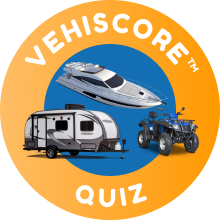Winter sports enthusiasts know that buying a snowmobile is a big decision. With so many options available, it can be overwhelming to choose the right one. A snowmobile buying guide can help navigate this process, offering valuable insights to consider before making a purchase. From beginners to seasoned riders, understanding the key factors that go into selecting the perfect snowmobile is crucial for an enjoyable and safe riding experience.
This comprehensive guide will explore the essential aspects to consider when you buy a snowmobile. We'll dive into determining your riding style and experience level, choosing the right type and size of snowmobile, and examining performance features and technology. By the end of this snowmobile buyers guide, you'll have the knowledge to make an informed decision and find the ideal machine for your winter adventures.
Determine Your Riding Style and Experience Level
When considering a snowmobile purchase, it's crucial to assess one's riding style and experience level. Snowmobile riders generally fall into five categories: beginner, novice, intermediate, advanced, and expert. Beginners have no prior snowmobile experience and limited winter backcountry knowledge. Novices possess some trail riding experience but limited backcountry skills. Intermediates can handle trails comfortably and are starting to grasp off-trail riding basics.
Advanced riders have significant experience, can control snowmobiles in deep snow, and are comfortable assessing avalanche terrain. Experts, typically riding 15+ days annually, can handle all terrains and conditions with complete control. For newcomers, it's essential to start with basic information about the sled and gear, familiarizing oneself with the vehicle's functionality through the manual.
Safety is paramount for beginners. It's recommended to practice on trails before attempting off-trail riding, avoid night riding or carrying passengers initially, and ensure a minimum snow height of four to eight inches for optimal riding conditions. Most beginners become comfortable with snowmobile handling after their fifth or sixth attempt.
Choose the Right Snowmobile Type and Size
Selecting the appropriate snowmobile type and size is crucial for an enjoyable riding experience. Snowmobiles come in various types, each designed for specific riding environments and conditions. Trail snowmobiles, also known as recreational or touring rigs, are versatile and popular for leisurely rides on groomed trails. They offer a balance of speed, maneuverability, and comfort, with engine power peaking at about 70 horsepower (HP).
For those seeking high-speed thrills, performance snowmobiles are designed for racing and adrenaline-fueled rides. Mountain snowmobiles, on the other hand, are built for rough and steep terrain, featuring long tracks and powerful engines. Utility snowmobiles are ideal for hauling cargo and heavy loads, with strong engines and large cargo capacities.
When choosing a snowmobile, consider factors such as riding style, conditions, and budget. Engine size is also important, with options ranging from 120cc to over 1000cc. Two-stroke engines offer good acceleration but higher fuel consumption, while four-stroke engines are more efficient but can be more expensive.
Consider Performance Features and Technology
When buying a snowmobile, it's crucial to examine the performance features and technology offered. Modern snowmobiles come equipped with advanced features that enhance safety, comfort, and overall riding experience.
One notable innovation is the programmable learning key, an exclusive digital electronic key used in Ski-doo snowmobiles. This key serves multiple purposes, acting as a tether cord and an electronic limiter for power and speed. It's particularly beneficial for novice riders, allowing preset power and speed levels tailored to their skill level.
Electric snowmobiles are gaining popularity, offering a quiet and clean ride without compromising on power or performance. These eco-friendly options provide minimal maintenance, lower ownership costs, and enhanced safety features.
Suspension systems play a vital role in snowmobile performance. Advanced suspensions offer independent movement of front and back portions, maintaining optimal track contact with the snow for maximum traction. Aftermarket suspensions can provide improved ride quality and traction through specialized geometry and shock valving.
CONCLUSION
Choosing the right snowmobile has a significant impact on your winter adventures. This guide has explored key factors to consider, from assessing your riding style and experience level to examining performance features and cutting-edge technology. By taking these aspects into account, you're better equipped to find a snowmobile that matches your needs and skill level, ensuring both safety and enjoyment on the trails or in the backcountry.
Remember, the perfect snowmobile for you depends on your unique preferences and circumstances. Whether you're drawn to the versatility of trail snowmobiles, the thrill of performance models, or the ruggedness of mountain sleds, there's an option out there for every rider. By doing your homework and keeping these considerations in mind, you're all set to make a well-informed decision and start your snowmobiling journey on the right track.
FREQUENTLY ASKED QUESTIONS
1. What is the most reliable snowmobile brand to purchase?
Yamaha snowmobiles are highly regarded for their durability and reliability. They are well-suited for both trail and off-trail riding, providing riders with confidence in their sled's performance under various conditions.
2. At what mileage is a snowmobile considered to have high mileage?
A snowmobile is generally considered to have high mileage if it has over 8,000 miles. Mileage between 4,000 to 8,000 is deemed medium, while anything under 3,000 miles is considered low. It's also important to consider the snowmobile's engine type, performance characteristics, and maintenance history.
3. What should I check when buying a used snowmobile?
When purchasing a used snowmobile, inspect the following components carefully: the skis, shocks, nun (bulkhead), engine, track, seat, bumper, handlebars, and dials. Additionally, perform a test start to ensure the engine runs smoothly.
4. What are five essential safety tips for snowmobiling?
- Always check the weather and trail conditions before setting out. Avoid riding in adverse weather conditions.
- Do not consume alcohol when planning to ride a snowmobile.
- Never go snowmobiling alone; always have a companion.
- Dress appropriately for safety and survival in case of emergencies.
- Be cautious when riding over ice on lakes and rivers, understanding the risks involved.
Reference















